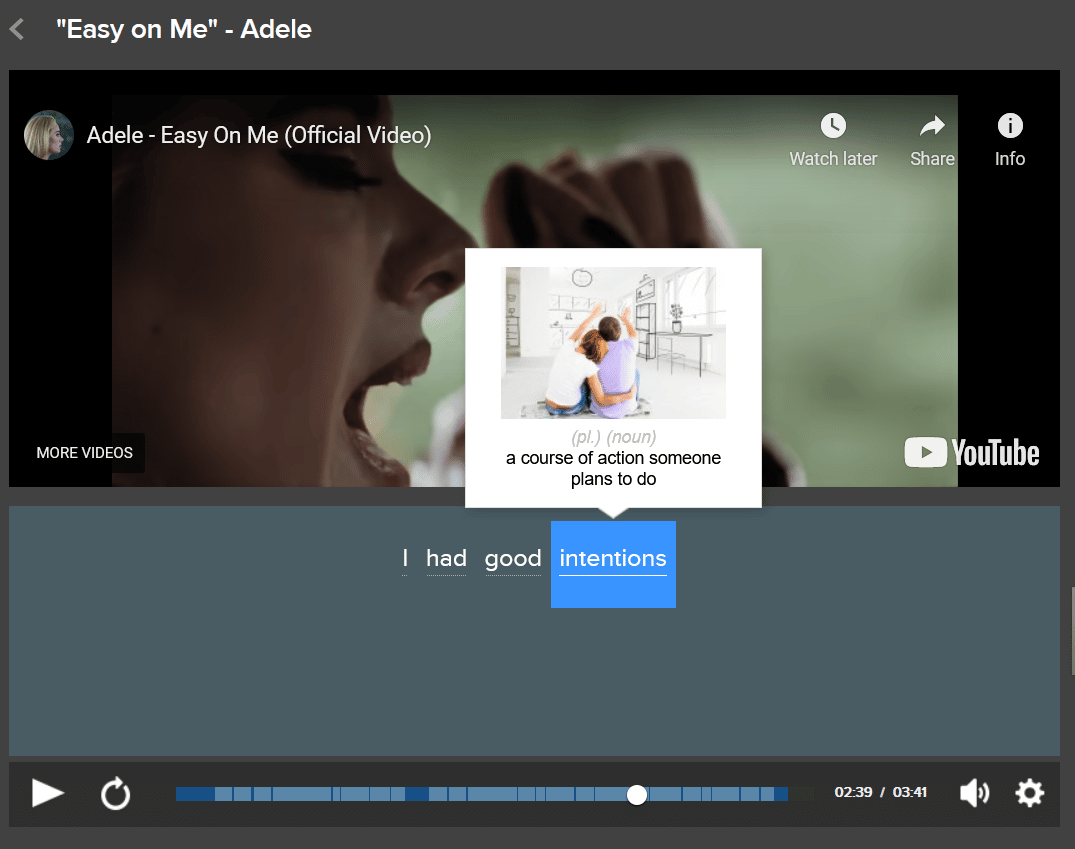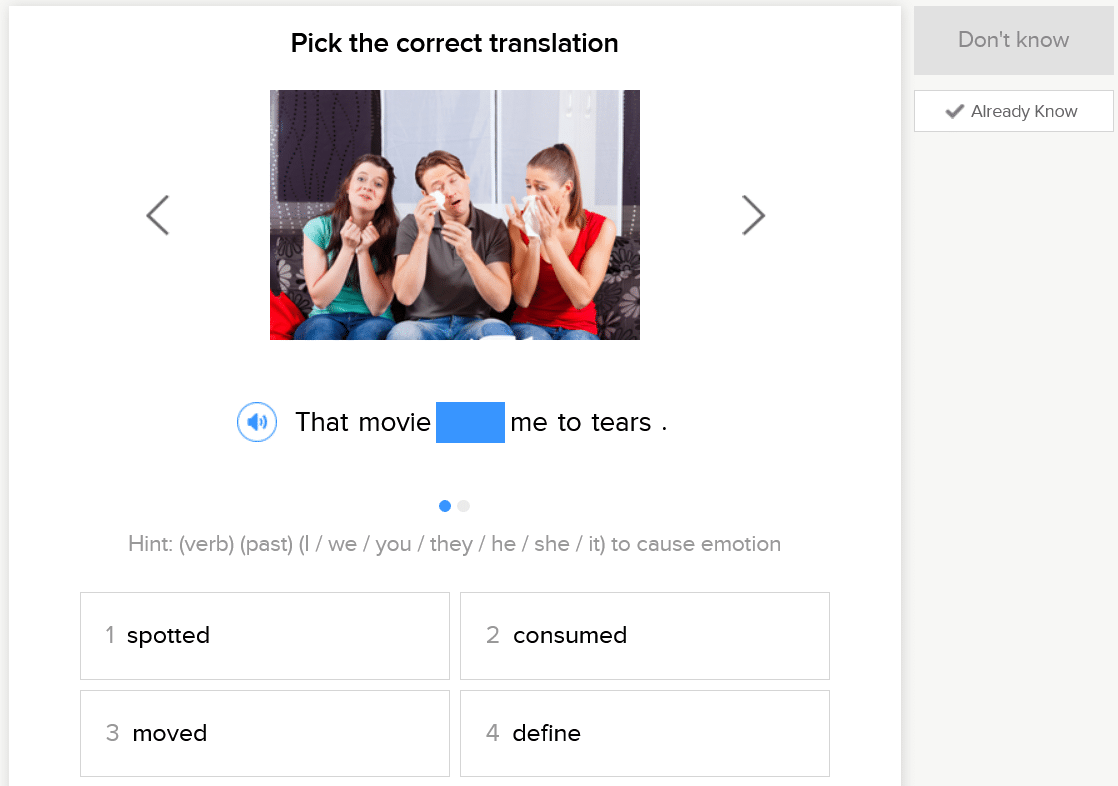
10 Awesome Activities to Improve Intermediate ESL Students’ Listening
Listening is every bit as vital to learning as reading, writing and speaking.
But it often slips through the cracks in the classroom.
Whether you’re using a range of audio resources or you’re simply getting students to speak to each other, listening is a great opportunity to expose students to a variety of accents, as well as to have fun whilst learning.
These ESL activities for intermediate students are game-changers for developing listening skills in the classroom!
Contents
- 1. Relay the message
- 2. Back-to-back interview
- 3. Follow the directions
- 4. Telephone
- 5. Minimal pairs card hold-up
- 6. Video clip quiz
- 7. Song gap-fill
- 8. Order-the-lyrics
- 9. Listen and throw
- 10. Slap the picture
Download: This blog post is available as a convenient and portable PDF that you can take anywhere. Click here to get a copy. (Download)
1. Relay the message
This classic game, otherwise known as “running dictation,” is a great active ice breaker, as well as a natural way to introduce a topic.
The game plan:
- Put students in pairs or groups of three, assigning one (or two) as a runner and one as a writer. Sit the writers at tables at one end of the room.
- Stick pre-printed messages at the other side of the room, one for each group or pair. These messages can be the same or different, easy or difficult, long or short, depending on the level and goals of the class.
- When you shout the word “go,” the runner runs to the message, reading and remembering what they can. This can be as much as a few sentences or as little as one word. The aim is to be able to relay it accurately to the writer.
- The runner goes back to the writer to relay the part of the message that they memorized. The writer (you guessed it!) writes it down.
- Repeat until the message is complete. Teams score points for speed but more importantly for accuracy of spelling and punctuation.
2. Back-to-back interview
This is a great activity for practicing listening without relying on lip reading or actions. It also incorporates speaking practice, thus killing two birds with one stone.
The game plan:
- Pairs of students sit back-to-back, one as the interviewer with a list of questions.
- The interviewee is given a famous person to role play, with a list of answers.
- The interviewer asks the questions, writing down the answers as they go along.
- The fastest interviewer to work out who they’re talking to wins!
3. Follow the directions
This listening activity for intermediate students provides excellent English listening practice which will prepare students to ask for directions in a foreign country.
The game plan:
- Provide students with a street map, either a real one or something tailored to the activity and their level. You can even go crazy and create a big one for the classroom floor!
- Split the students into teams, and have one person go at a time.
- Read instructions for the student to follow, such as “go straight two blocks.” To win a point, the student must successfully navigate the map until they find the right store, the lost friend or the buried treasure.
4. Telephone
This game encourages students to determine similar-sounding words from one another and can be used as a starter activity to introduce any topic.
The game plan:
- Create two teams of students and set up both teams in lines. The end of each team line should be at the whiteboard.
- Whisper a word or sentence to the student farthest away from the whiteboard, and then have them whisper the message they heard to the next student. Each student whispers to the next until the end of the line.
- The last student writes the message on the board. The winner is the team with the most accurate spelling, pronunciation and content.
5. Minimal pairs card hold-up
Improve your students’ knowledge of proper pronunciation with this quick-fire game, which is good for reinforcing phonics lessons.
The game plan:
- Give a set of pre-prepared word cards to each team (there can be as many teams as you want, depending on how many card sets you have). Go here for a useful list of minimal pairs.
- Students spread the word cards out on a table.
- Call a word out. For example: “feet!” The students have to search their decks and hold up that word’s card as fast as possible.
6. Video clip quiz
Bite-sized video clips—like the interactive ones curated by FluentU—are the perfect way to showcase vocabulary, grammar and idiomatic expressions in a compelling way for students and teachers alike.
FluentU’s ever-growing collection of English language videos comes from real-world sources like children’s shows, music videos, Disney movies, YouTube videos and inspiring talks.
When students encounter an unfamiliar word in a video, they can just click or tap on that word in the subtitles to pause the video and get an instant definition—complete with pronunciation examples, visual clues and multiple text and video examples of that word used in context.
FluentU also has quizzes for each video and flashcard decks that adapt to the needs of every learner.
Teachers can use FluentU’s extensive video library as an endless source of lesson plan ideas. Find videos that support your curriculum, bringing textbook topics to life. Work collaboratively with your colleagues and keep students organized by class—all with one synchronized, cloud-based account that’s easily accessible from computers, tablets and smartphones.
The game plan:
- Give students a question to answer, dividing them into teams.
- Begin watching the clip. To play, students must pay close attention and stand up when they hear the answer to the question. Pause the movie and see if the first person who stood up knows the correct answer.
- Ask the second question. Repeat. Alternatively, you can give the students a list of questions to answer and allow the clip to play through entirely. Then you see who has the most correct answers at the end.
Check out this post for a comprehensive list of creative, effective ESL movie activities.
7. Song gap-fill
Songs are a great way to engage reluctant listeners, as they can be tailored perfectly to fit the preferences of the students. Why not use the latest pop song? Lyric repetition is welcomed here!
The game plan:
- Give each student/pair the song lyrics with some words missing. To make it easier you can put the missing words in a box at the top of the page.
- Play the song, pausing if necessary. The aim is for the students to fill in the missing words.
- Once at the end, go through the answers to see which student/pair got the most correct.
As a bonus, you can use specific song lyrics to teach vocabulary or grammar concepts. For instance, check out this list of songs with passive voice in the lyrics.
8. Order-the-lyrics
This activity is a variation of the above, giving students practice in noticing the subtle differences between lyrics in music.
The game plan:
- Pairs get a set of the song lyrics cut up into lines.
- As they listen to the chosen song, they have to put the lyrics in the right order on the table. Repeat the song if necessary. You can always have a sing-along after the activity is completed!
9. Listen and throw
Of course, there’s no reason why you shouldn’t go back to your trusty textbook audio CD. Go ahead, and spice up the accompanying listening exercises to make this CD even more valuable as a learning tool. In this exercise, students are listening for a specific answer to a question in an audio dialogue.
The game plan:
- Sit the students in a circle and split them into three or four teams.
- Give each individual a piece of paper that’s their team color. Have them scrunch the paper into a ball.
- Place three baskets in the middle of the circle, each with a possible answer written on it.
- Ask a question relating to the listening exercise — this should preferably be something that appears near the end of the dialogue. For example, “Whose birthday is it?”
- Students listen to the dialogue and throw their paper ball when they know the answer. Count the colors in the correct basket to determine the winner.
10. Slap the picture
This activity uses friendly competition to encourage sharp listening and quick reaction times. A good activity for when students are getting tired or losing concentration.
The game plan:
- Students sit opposite each other in pairs, with pre-prepared words in between them. There should be no more than eight words, and students should look at them first to familiarize themselves.
- As they listen to a chosen dialogue, they have to slap the correct word when they hear it. Fastest slap wins a point! They can keep a tally as they go along to see who the winner is.
Whatever the activity, whatever the age or level, the most important thing is for your students to stay engaged by being challenged, doing something new and having fun.
Which of these ESL listening activities for intermediate students will you try first?




